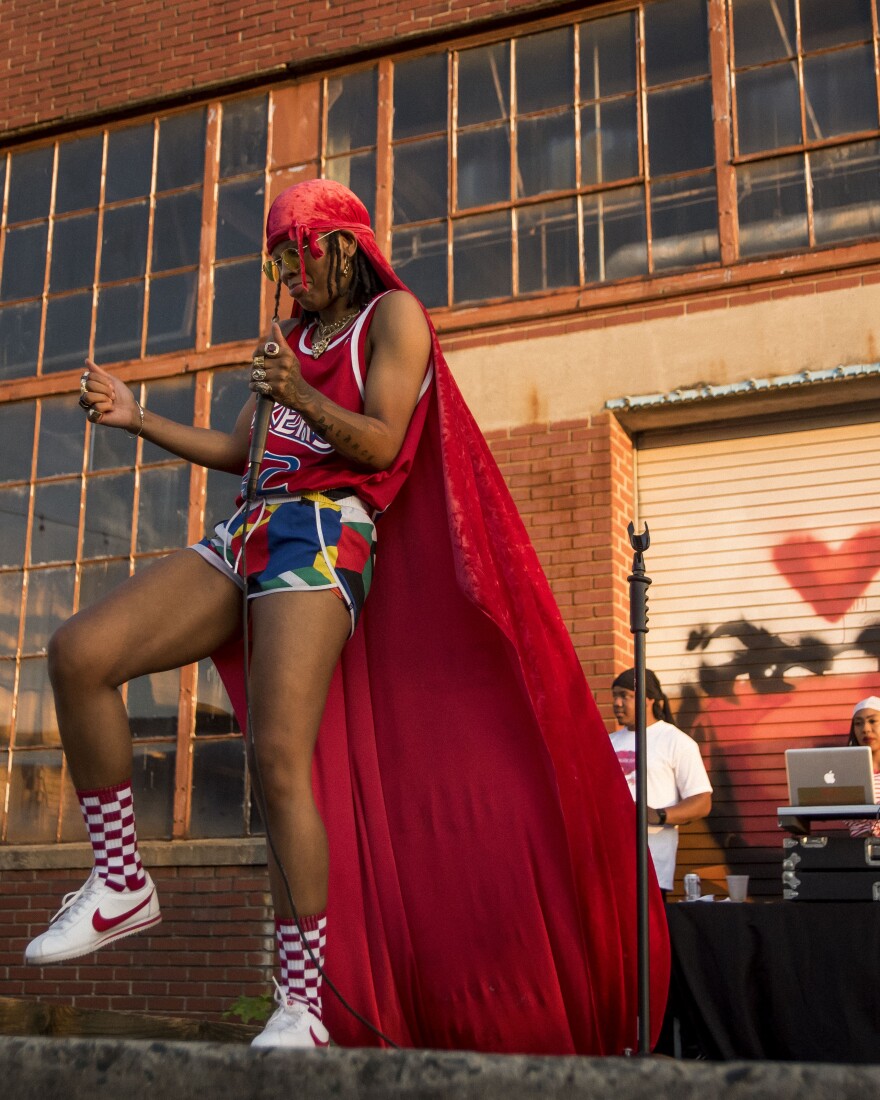Jimi Thompson, known as Dammit Wesley, hears a lot of negative things about Charlotte. Like how the city has no culture, just condos. Last year, he set out to prove the critics wrong with the inaugural Durag Festival.

"This festival is a truth telling experience to the culture of the city. I’m not bringing anything new to Charlotte; this has always been here," Wesley said.
By that, he means Charlotte has a rich black history. He says Charlotte’s black culture has more of an impact on the city than people think. With civil rights, its workforce and neighborhoods.
"Brooklyn, the area of Brooklyn, is now being gentrified into a new condo area, but that was a black city within Charlotte a long time ago. So this black culture has always existed," he said.
The Durag Festival is this Saturday at Camp North End. There will be fashion shows, live performances and even barber activations. Barbers will use their clippers like paint brushes, showing off their artistry with cool designs and unique haircuts. And, of course, there will be durags everywhere -- worn by men, women and children. And some are quite elaborate. There are durag capes, one-piece durag outfits, even baby durag onesies.
A picture of a baby in a durag outfit became one of the most popular pictures from last year’s event.

So why durags? Wesley says durags are a symbol for the black experience.
"They're an allegory, essentially. Every culture has a crown. Their hair is very important to their history," he said.
"For us as black people, that has always been something that has been attempted to be stripped away from us. So in Louisiana, they had the Tignon laws, where black women would have to cover their hair. So a way around that is they would use these very elaborate wraps and jewelry. Very beautiful, awesome.
"Okay, let's fast forward to the 1920s, people are like conching their hair. They’re getting these straight looks, the 'doos.' Well, the only way to protect your hair, or your doo, is to keep it wrapped before you go out and perform somewhere.
"I believe it was around the late 60s early 70s, there was this invention called the durag. The purpose is to protect your hair. And there is just such a negative stigma around durags. And the idea is that you're a thug, you are lesser than, you're ghetto if you are seen with it in public, but in actuality, you're wearing a durag because you're taking care of yourself, you have pride about yourself, you have intentions of going somewhere."

Wesley says the timing of it all is why the Durag Festival captured so many eyes.
"It came about a couple months after 'Black Panther,' so a lot of us were on our pro-black wave at that moment," he said.
Every culture has a crown. Their hair is very important to their history.
"Durag Fest is an event where the people in attendance are just as important as the exhibition of the artwork that exists within the show itself," he explained, adding: "Being able to walk into a gallery or museum and get to see naked white women in shells surrounded by angels and there are ornate gold frames around them. You have these rare materials that are used in spaces with white walls that elevate European people and culture, right? Durag Festival is that same thing for us. It was a black space where black people are being elevated as art. Every person in that photograph even that Durag baby...that’s art."

Wesley, a visual artist, has his own art studio, BLK MKT CLT at Camp North End. He got a taste of organizing events as a student 10 years ago at Winthrop University. He put on mock concerts, where fellow students impersonated famous musicians.
"The passion for using art as a way to manipulate behaviors in certain environments that are congruent with parties and festivals. So that’s sort of the long story of who Dammit Wesley is and where he came from," he said.

"This a uniquely African American experience. Uniquely. Just more or less wave culture and durag culture is something that we invented, something that is uniquely us and something we should take pride in," Wesley said.
One example of that pride is a wave check competition. The person with the best low-tapered wavy hair, reminiscent of ocean-like ripples or waves, wins. Wesley says for African Americans, waves are a crown just for them.

















